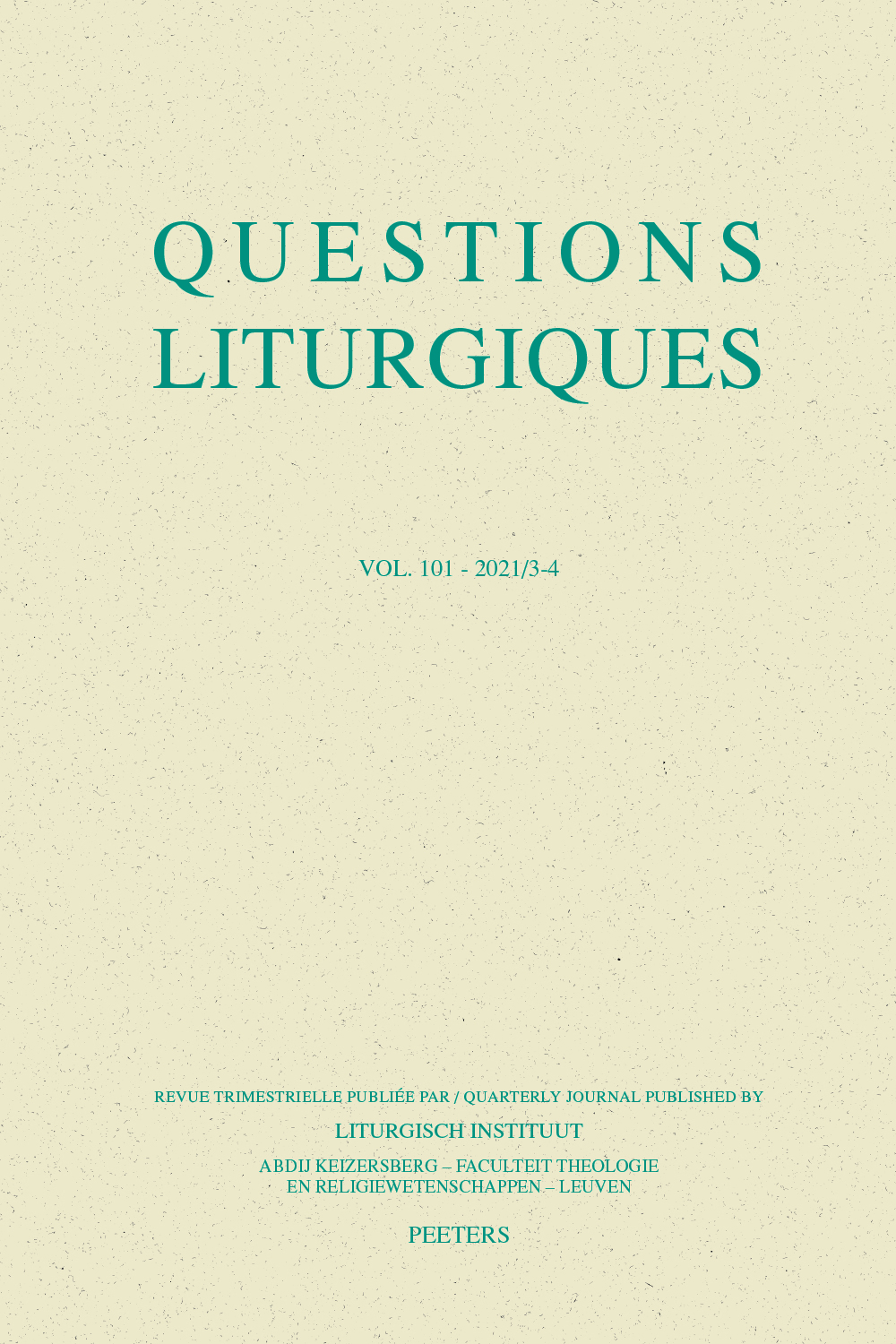 previous article in this issue previous article in this issue | next article in this issue  |

Preview first page |
Document Details : Title: Lactantius and Creation of the Roman Canon for Imperial Liturgy Author(s): KAPPES, Christiaan Journal: Questions Liturgiques/Studies in Liturgy Volume: 100 Issue: 1-2 Date: 2020 Pages: 84-137 DOI: 10.2143/QL.100.1.3287691 Abstract : The study principally concentrates on reconstructing the Roman Canon to approximately 325 CE. The reconstruction takes advantage of traditional sources and witnesses to the primitive Roman Canon but adds additional witnesses extracted from the so-called Gelasianium Vetus in order to fill in the chiastic structure of the Eucharistic Prayer. Furthermore, to justify each section of the chiastic structure of the reconstructed Roman Canon, the author provides a detailed analysis of Latin vocabulary and Roman institutions explaining exhaustively the author’s choices of texts. The utility of Roman law is necessary to grasp the formulae and theological points in both the reconstructed and extant versions of the Roman Canon. The study also provides solid arguments for attributing the redaction of the Roman Canon, as used in Rome in the fourth century, to the ecclesiastical writer Lactantius. This hypothesis is strengthened by textual comparisons drawn between the reconstructed Roman Canon and Lactantius’s style and vocabulary in his works. The study uncovers the contributions of Roman-pagan authors of classical antiquity and Roman jurists to explain peculiar features of the Roman Canon’s vocabulary and phraseology. Finally, an appendix suggests edits to the Roman Canon made by Pope Damasus of Rome in the late-fourth century. Cette étude se concentre principalement sur la reconstruction du Canon romain jusqu’à environ 325 de notre ère. La reconstruction s’appuie sur les sources et les témoins traditionnels du Canon romain primitif, mais ajoute des témoins supplémentaires tirés du Gelasianium Vetus afin de compléter la structure chiastique de la Prière eucharistique. De plus, pour justifier chaque section de la structure chiastique du Canon romain reconstruit, l’auteur fournit une analyse détaillée du vocabulaire latin et des institutions romaines expliquant de manière exhaustive les choix de textes de l’auteur. L’utilité du droit romain est nécessaire pour saisir les formules et les points théologiques tant dans la version reconstruite que dans les versions étendues du Canon romain. L’étude fournit également des arguments solides pour attribuer la rédaction du Canon romain, tel qu’il était utilisé à Rome au IVe siècle, à l’écrivain ecclésiastique Lactance. Cette hypothèse est renforcée par les comparaisons textuelles établies entre le Canon romain reconstruit et le style et le vocabulaire de Lactance dans ses oeuvres. L’étude révèle les contributions des auteurs romano-païens de l’Antiquité classique et des juristes romains pour expliquer les particularités du vocabulaire et de la phraséologie du Canon romain. Enfin, un appendice suggère des adaptations au canon romain faites par le pape Damase de Rome à la fin du IVe siècle. |
|


